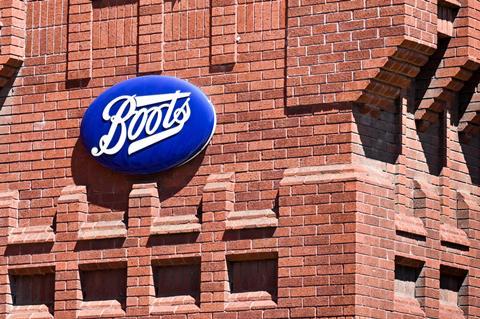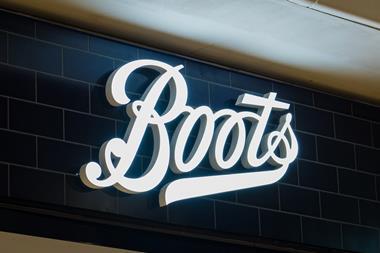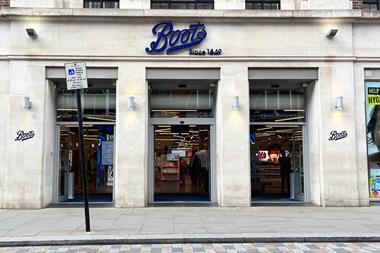A day after Walgreens’ chief executive went on record to say Boots is no longer for sale, the high street giant’s chief executive, Seb James, called it quits. With doubts about its future ownership and no leadership replacement to steer the ship, Retail Week takes a look at what lies in store for the retailer.

To the outside world Boots may have delivered its 13th consecutive quarter of market share growth, but behind closed doors the UK’s largest health and beauty retailer is going through some big changes.
While Walgreens issued a profit warning “reflecting challenging pharmacy industry trends and a worse-than-expected US consumer environment”, sales in its international arm, which includes its German wholesale business and Boots UK, grew 1.6% in the quarter.
Boots reported a 1.6% increase in total sales while comparable retail sales grew 6% on a constant currency basis as the retailer saw market share growth across all categories for the 13th consecutive quarter.
In January this year, Tim Wentworth, chief executive of Walgreens Boots Alliance (WBA), told The Telegraph “everything is on the table” when asked about possible options of a sale or a London IPO for Boots, adding fuel to the fire which was already running wild as rumours of various private equity players emerged.
Six months later, he told a different story. One where a review of Boots UK had shown that there were “attractive options to unlock value in this business” and any plans for a sale or a float were shelved for the foreseeable future.
Then, the very next day, news broke that Boots chief executive Sebastian James had decided to step down from the business, with doubts about the chain’s ownership being one of the reasons for his decision.
James leaves big shoes to fill, having steered the ship through the turbulent pandemic. Retail Week takes a closer look at what’s next for the UK’s largest health and beauty retailer.
Cash rich, store poor
The decision to abandon a sale may not make everyone at Boots happy, but it may be a sign that things there are going well.
The brand may still have a long way to go when it comes to revamping its vast UK store estate, but the retailer has taken steps in the right direction when it comes to its beauty offering and loyalty program, despite reports of underinvestment by its owner.
A source with an understanding of the situation said Boots’ management had previously been in favour of a sale since a private equity owner made more sense for a business like Boots.
They said: “We were very excited then (in 2022, when Boots was first put up for sale) about the idea of private equity ownership because we believe that they would make the right, sensible investments in the store base and in the rest of the business to really drive growth. And it’s clear that Walgreens find that investment very difficult to do.”
They added that even following the story from the outside, it was easy to conclude from the news headlines that “Walgreens isn’t selling it because they want the cash flow that’s created by Boots – and it’s a very cash-rich business.”
WBA can certainly be accused of underinvestment in Boots and its store estate. In June last year, the US pharmacy giant said it would be shutting 300 Boots stores in the UK to focus investment more acutely on individual stores.
And now that a sale is off the table, there’s no doubt there will be more store closures to come, says one source.
“The cost-cutting growth programme, in stores and in the office, continues. If they’re (WBA) looking for the cash flow, that probably suggests they’re not going to be looking to make major investments in the store base.
“There’s no doubt that more stores will need to close; 300 stores have closed to date and probably at least another 300 should close because they are either loss-making or make very little profit.”
Loss of talent
So, WBA has made up its mind and taken down the ‘for sale’ sign, but not without a cost – losing valuable talent.
The constant back and forth on ownership is bound to cause further instability at the retailer, particularly after the departure of Seb James, says Josh Holmes, senior analyst at Retail Economics.
He said: “The move to put plans to sell or float Boots on ice shows that its US parent now places greater value on Boots as a growth driver, and is reluctant to part with it without achieving an ambitious valuation. However, this back and forth on ownership causes instability, contributing to uncertainty about the long-term strategic direction for UK management. Seb James stepping down as CEO is likely a reflection of these mixed signals.”
With James due to leave in November, one source said this is bound to create a chain reaction with “at least one other senior person” leaving with him, and “the number one reason for them going being the ownership [structure] above them.”
This is not the first time Boots has suffered on the talent front. The retailer lost big names from its top board after it abandoned a sale in 2022, including chief operating officer, Tracey Clements; chief financial officer, Michael Snape; and chief transformation officer, David Hobbs.
While Boots has cemented its position as the UK’s largest health and beauty retailer, a stable top should be its priority now if it wishes to unlock more opportunities from the booming health and beauty market, says Holmes.
“Looking ahead, the health and beauty market offers significant opportunities for Boots. This sector has been a bright spot in UK retail this year, driven by a consumer focus on wellness and innovative products. To fully capitalise on these opportunities, Boots needs stability at the top and a clear, consistent strategy to keep the progress going. Continuing to invest in both physical and digital retail will be crucial for maintaining its momentum and market leadership.”


























No comments yet